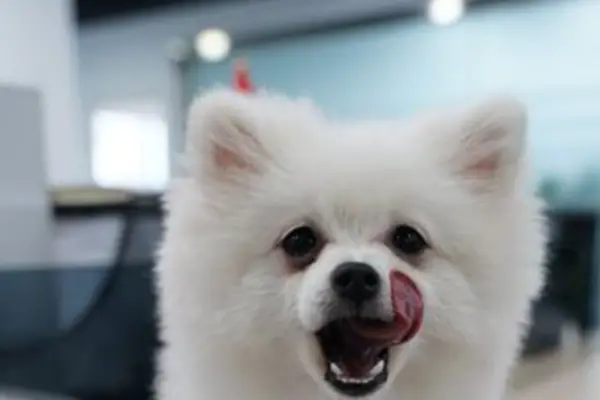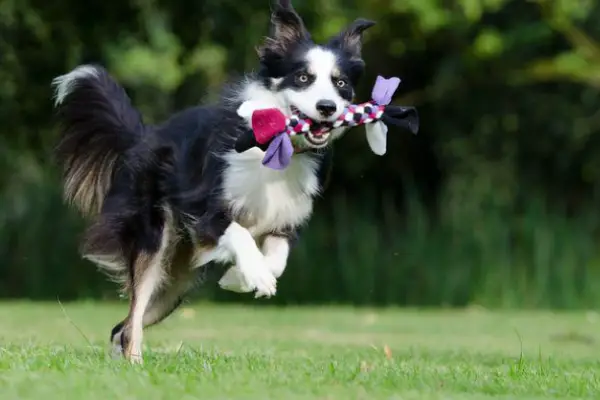Dog Desensitization Training [How & When to Use]
![Dog Desensitization Training [How & When to Use] Dog Desensitization Training](https://petcreeks.com/wp-content/uploads/2023/12/pexels-sarah-chai-7282827.jpg)
If you’ve ever wondered how to help your furry friend overcome fears and anxieties, then you’re in for a treat.
In today’s blog post, we’ll dive into the world of dog desensitization training and discover the powerful techniques that can transform your pup into a confident and happy companion.
So, grab a cup of coffee, and let’s embark on this exciting journey together!
What is dog desensitization training?
Dog desensitization training is a technique used to help dogs overcome fear or anxiety toward specific triggers by gradually exposing them to the trigger in a controlled and positive manner.
This process involves gradually increasing the exposure to the trigger while ensuring the dog remains relaxed and calm throughout the training.
It aims to change the dog’s emotional response from fear or anxiety to a more positive or neutral one.
Benefits of Dog Desensitization Training
Dog desensitization training offers numerous benefits for both dogs and their owners.
Firstly, it helps dogs overcome fear and anxiety by gradually exposing them to the triggers that cause these reactions.
This process allows them to build confidence and develop coping mechanisms.
Secondly, desensitization training improves their social skills and reduces aggressive behavior towards other animals or humans.
It also enhances their ability to handle new environments and situations with ease.
Moreover, desensitization training strengthens the bond between the dog and the owner as they work together to overcome challenges.
Additionally, it gives owners peace of mind knowing that their dog is less likely to exhibit fear-based reactions.
Lastly, desensitization training empowers owners to confidently take their dogs out in public, enhancing the overall quality of life for both the dog and the owner.
Basic Principle of Dog Desensitization Training
So, the basic principle of dog desensitization training is all about helping your furry friend overcome their fears or anxieties.
It involves gradually exposing them to the thing that makes them uneasy in a controlled and positive way.
The idea is to start with a very mild version of the trigger and then slowly increase the intensity as your dog becomes more comfortable.
Throughout the process, it’s crucial to keep things positive and rewarding for your pup, so they associate the trigger with good things.
Consistency and patience are key, as desensitization takes time and cannot be rushed.
The goal is for your dog to eventually be able to handle the trigger without feeling stressed or anxious.
Remember, every dog is unique, so the process may vary from one to another. Just keep the training sessions short and enjoyable for your furry buddy!
When to Use Dog Desensitization Training
Dog desensitization training is helpful when your pup shows fear or anxiety towards certain triggers, like loud noises, strangers, or other animals.
It involves gradually exposing your dog to the trigger in a controlled and positive way, helping them become less reactive over time.
It’s best to use desensitization training when your dog’s fear or anxiety is interfering with their quality of life or causing them distress.
Consult a professional trainer or behaviorist to create a tailored desensitization plan for your dog, as they can assess the situation and provide expert guidance.
Remember, patience and consistency are key in desensitization training, so be prepared to invest time and effort into helping your furry friend overcome their fears.
Lastly, always prioritize your dog’s well-being and comfort throughout the desensitization process.
How to Use Dog Desensitization Training
To master dog desensitization training, start by introducing your pup gradually to stimuli that trigger reactions.
For instance, if your dog is anxious around new people, expose them to friends in a controlled environment.
Keep interactions positive and reward calm behavior. Gradually increase exposure, reinforcing positive responses.
Patience is key; take small steps and celebrate progress. This humane approach helps your furry friend build resilience and overcome anxieties.
Remember, consistency and positive reinforcement create a trusting bond between you and your dog during desensitization training.
Here are some common examples of when and how to use dog desensitization training:
Addressing Separation Anxiety in Dogs Using Dog Desensitization Training
Here’s how to address separation anxiety in dogs using dog desensitization training:
Step 1: Assess and Understand the Anxiety
The first step is to assess and understand the severity of your dog’s separation anxiety. Observe their behavior when you leave the house and look for signs of distress, such as excessive barking, destructive behavior, or toileting indoors. It’s essential to differentiate between separation anxiety and other behavioral issues.
Step 2: Create a Safe Space
Designate a safe and comfortable space for your dog when you’re away. This area should be associated with positive experiences and include familiar items like their bed, toys, and even your unwashed clothing (which carries your scent). Gradually introduce your dog to this space by encouraging them to spend time there, even when you’re present. This establishes a positive association with the area and helps reduce anxiety.
Step 3: Gradual Departures and Counterconditioning
Start by practicing short departures from home and gradually increase the duration over time. Begin with very brief absences, and as your dog becomes more comfortable, gradually extend the time you’re away. During these departures, engage in counterconditioning by giving your dog a special treat or a puzzle toy that will keep them occupied and distracted. This positive reinforcement helps to shift their focus from your departure and reduces anxiety.
Step 4: Desensitization to Departure Cues
Dogs often develop anxiety in response to specific departure cues, such as picking up keys or putting on shoes. To desensitize your dog to these cues, start by performing these actions without actually leaving. For example, jingle your keys or put on your shoes and then carry on with your usual activities at home. By repeatedly exposing your dog to these cues without leaving, you help them realize that these actions don’t always result in separation. This process helps to reduce their anxiety response.
Step 5: Seek Professional Help if Needed
If your dog’s separation anxiety persists despite your best efforts, it’s crucial to seek professional help. A certified dog trainer or a veterinary behaviorist can provide expert guidance and develop a customized training plan for your dog’s specific needs. They may recommend additional techniques, such as medication or specialized exercises, to complement the desensitization process.
Addressing Fear and Anxiety of Loud Noises in Dogs with Dog Desensitization
Step 1: Identify the Trigger Noises
Start by identifying the specific loud noises that trigger fear and anxiety in your dog. These could be thunderstorms, fireworks, or even construction sounds. Make a list of these noises so that you can gradually expose your dog to them during the desensitization process.
Step 2: Create a Safe Space
Designate a safe space for your dog where they can retreat and feel secure during the training. It could be a specific room, crate, or a cozy den-like area. Make sure this space is comfortable and stocked with their favorite toys, bedding, and treats. This safe space will serve as a refuge for your dog during the training sessions.
Step 3: Start with Gradual Exposure
Begin the desensitization process by exposing your dog to the trigger noises at a very low volume. You can find recordings of these sounds online or use a sound effects app. Start playing the sounds at a barely audible level while engaging your dog in a positive activity such as playing or feeding treats. Monitor your dog’s reaction closely and ensure they remain calm and relaxed.
Step 4: Gradually Increase the Volume
Over time, gradually increase the volume of the trigger noises while observing your dog’s response. Keep the volume at a level where your dog shows mild signs of discomfort but is still able to stay relatively calm. Remember, the key is to expose them to the sounds without overwhelming them. Continue engaging your dog in positive activities and reward them with treats and praise for remaining calm.
Step 5: Repeat and Reinforce
Consistency is crucial for desensitization training. Repeat the process regularly, gradually increasing the volume of the trigger noises as your dog becomes more comfortable. However, always prioritize their well-being and never push them beyond their comfort zone. With time and patience, your dog should begin to associate the trigger noises with positive experiences and gradually overcome their fear and anxiety.
Related Questions
When should I consider desensitization training for my dog?
You might consider desensitization training for your dog if they exhibit signs of fear, anxiety, or aggression towards certain stimuli such as other dogs, loud noises, or unfamiliar people. It’s important to address these issues early to prevent them from worsening.
Can I do desensitization training on my own, or do I need professional help?
It’s possible to do desensitization training on your own, but seeking professional help from a certified dog trainer or behaviorist is often recommended, especially for more complex issues. They can provide guidance and support tailored to your dog’s specific needs.
How long does desensitization training take to show results?
The time it takes for desensitization training to show results can vary depending on the dog, the severity of their fear or anxiety, and the consistency of training. Some dogs may show improvement within a few weeks, while others may take several months.
What are some common mistakes to avoid in desensitization training?
One common mistake is progressing too quickly, which can overwhelm the dog and set back progress. It’s important to take small steps and be patient. Additionally, using punishment or force can worsen the dog’s fear and should be avoided.
Can desensitization training work for all dogs?
Desensitization training can be effective for many dogs, but it’s important to remember that each dog is unique. Some dogs may respond well to desensitization training, while others may require alternative methods. It’s best to consult with a professional to determine the most suitable approach for your dog.
Conclusion
So, there you have it! Dog desensitization training is a powerful tool that can help your furry friend overcome fears, anxieties, and behavioral issues. By gradually exposing them to the things that trigger their discomfort and rewarding their progress, you’ll be amazed at the positive transformation in your pup’s confidence and happiness. With patience, consistency, and lots of love, you can be their biggest cheerleader on the path to a more relaxed and joyful life together.

![Great Pyrenees Separation Anxiety [Explained] Great Pyrenees Separation Anxiety](https://petcreeks.com/wp-content/uploads/2023/04/Great-Pyrenees-Separation-Anxiety-768x555.jpg)




![Dog Begging for Food [How to Address Begging] Dog Begging for Food](https://petcreeks.com/wp-content/uploads/2023/09/pexels-samson-katt-5256134.jpg)